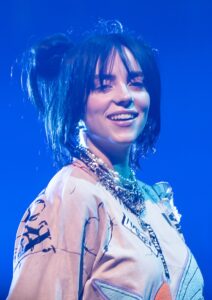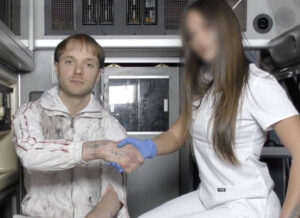In a city constantly reinventing itself through murals, tags, and billboard interventions, few events feel as charged with both anticipation and nostalgia as the arrival of PINK CLOUD, the latest exhibition from Jonas Melvin—better known to the world as GREY. Presented by BEYOND THE STREETS, the landmark Los Angeles debut signals not just a return, but a reckoning, as GREY steps out from nearly a decade of self-imposed obscurity to share space with some of contemporary street culture’s most significant names.
Opening April 18, 2025, PINK CLOUD brings together paintings, sculpture, installation work, and photography across a collaborative environment that blurs the line between gallery and memory. Alongside GREY, the roster includes heavyweights such as Alexis Ross, Alicia McCarthy, Barry McGee, Cheryl Dunn, Stephen “ESPO” Powers, and Todd James, among many others. The exhibition isn’t just a comeback—it’s a convergence.
The Return of GREY
To speak of GREY is to speak in fragments—myth, burnout, brilliance. Over the last 20 years, his work has appeared on train cars, in underground zines, and, occasionally, in the odd group show, where it would vanish as quickly as it arrived. His decision to withdraw from the public eye in the early 2010s came at the height of critical interest in his interdisciplinary, text-heavy works that merged early graffiti styles with found objects and socio-political commentary.
PINK CLOUD, then, is less a return to form than a reframing of form itself. In one of the central pieces of the show—“Nothing Fades Faster Than Neon Memory”—GREY layers reflective industrial tape over a metal billboard scrap, scrawled with phrases half-erased and barely legible. It’s an excavation of presence and erasure, light and entropy.
In an interview prior to the opening, GREY offered few words, but many implications: “It’s not about art anymore. It’s about what’s left when the art doesn’t care back.”
Friends, Forces, and Frequencies
But PINK CLOUD isn’t a solo declaration. It’s a networked experiment, a joint release of energy by artists who’ve defined street aesthetics and urban critique across decades. There’s Cheryl Dunn’s raw photography from the Lower East Side in the 1990s; Timothy Curtis’s obsessive linework; Angel Castro’s vivid reclamation of barrio iconography; and MERCH’s deadpan critiques of consumer logic turned into sculpture.
Barry McGee contributes a wall of stacked panels—a chaotic grid that bridges surf culture, throw-up tags, and domestic banality. ESPO (Stephen Powers) provides typographic interventions that offer both satire and sincerity. In large letters across a wooden scaffold installation, he writes: “I LOVED YOU ENOUGH TO GRAFFITI IT.”
There is, throughout the exhibition, a sense of camaraderie not just in curation, but in trauma and triumph. These are artists who weathered the commercialization of graffiti, the collapse of independent print culture, and the transformation of urban identity under late capitalism. And still, they make.
PINK CLOUD As Environment
Rather than compartmentalized rooms, PINK CLOUD moves like a living organism. Sound installations buzz from a central core built by Dan Murphy, echoing train yards and alley reverbs. Sculptures by Elberto Muller anchor corners in rust and wire. One of the most arresting contributions comes from Mark Cross, whose cement-cast pair of sneakers sits suspended by dental floss from the ceiling—fragile, absurd, iconic.
The exhibition is designed to be immersive, but not slick. Walls are unfinished. Taglines are scrawled rather than mounted. Visitors are invited not just to look, but to feel—to remember what it was like to walk through a city and find messages left behind by invisible hands.
Cultural Timing and Emotional Weather
Why now? Why here?
The PINK CLOUD title itself is deliberately unstable. It refers to the moment of euphoria that often follows a personal crisis or recovery—before the descent or clarity settles in. For GREY, that emotional landscape defines his re-emergence. For Los Angeles, a city reckoning with both its past and future as a creative capital, the timing couldn’t be more precise.
In the words of BEYOND THE STREETS founder Roger Gastman, “This show is a love letter and a warning. These artists helped write the visual language of our cities. What happens when you erase the wall? What happens when the wall speaks back?”
Gastman’s platform has long been a champion of the unsanctioned, the ephemeral, the overlooked. With PINK CLOUD, he offers a reminder that street art is not a phase, not a style, but a lived experience. One that evolves, dissolves, and insists.
Community Over Celebrity
Crucially, PINK CLOUD resists the trappings of celebrity culture often tied to the gallery world. There’s no “lead artist” hierarchy. There are no VIP hours or velvet ropes. The opening reception—set for April 18 from 6 to 9 p.m.—is billed as a “gathering,” not a premiere. For many involved, this isn’t just a show, but a reunion.
That grassroots tone is intentional. From the printed zine catalogue to the on-site screen-printing station manned by GKAE, the energy is participatory. Visitors aren’t merely observers—they’re part of the unfolding atmosphere.
Final Reflections
PINK CLOUD is not tidy. It’s not linear. It’s a swirling convergence of memory, form, resistance, and personal repair. But in its mess and multiplicity lies its strength. Whether you enter the space as a longtime follower of these artists or a curious newcomer, you’ll leave with the sense that you’ve wandered through something not only seen—but felt.
In a time where creative expression is often reduced to content, PINK CLOUD arrives as a raw and radical reminder of art’s capacity to unmake, remake, and survive.
No comments yet.









